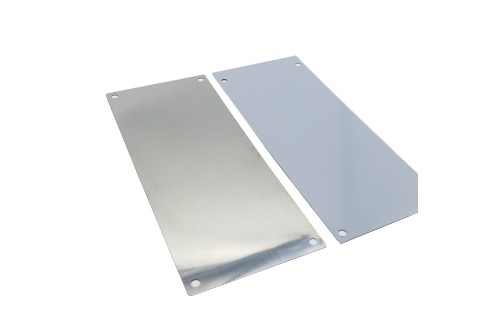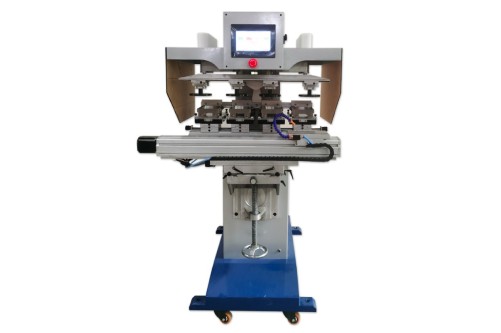Introduction:
Pad printing is a flexible printing technique that’s used across a range of industries, including the automotive, consumer goods, and medical equipment sectors. It involves transferring ink from a printing plate onto a three-dimensional object, making it ideal for printing on curved, irregular, or textured surfaces.
Users must be educated about the most recent trends and predictions in the pad printing business to remain competitive in today’s fast-paced market. By keeping up-to-date with the latest technology and advancements, users can make informed decisions about the type of equipment to invest in, the materials to use, and the printing techniques to employ.
This article explores the current state of pad printing technology, emerging trends, future developments, and considerations for choosing a pad printing machine. By the end of this essay, readers will have a better understanding of the significance of remaining up to date on the latest pad printing trends and predictions.
Let’s dive in and explore the current state of pad printing technology.

Current State of Pad Printing
Pad printing has been a widely used printing technology since the 1960s. Using a silicone pad, transferring ink from a printing plate onto a three-dimensional object. Pad printing is used in various industries, such as automotive, medical devices, electronics, toys, and promotional items.
1. Advantages of Pad Printing:
One of the main advantages of pad printing is its versatility. It can print on various materials, including plastics, metals, glass, ceramics, and even textiles. Pad printing can also print on irregular and curved surfaces, making it suitable for printing on complex shapes.
Another advantage of pad printing is its cost-effectiveness. Pad printing is relatively inexpensive, especially for small to medium-sized production runs. It also has a quick set up time, which makes it ideal for printing on-demand.
2. Limitations of Pad Printing:
For colorful logo printing, the speed of pad printing is less than UV printing.
Pad printing is a versatile and cost-effective technology widely used in various industries. While it has limitations, it remains a popular choice for printing complex shapes and materials. In the next section, we will discuss some emerging pad printing technology trends that will likely shape the industry’s future.
Emerging Trends in Pad Printing
Pad printing, also known as tomography, is a printing process used to transfer ink from a silicone pad onto a substrate. It is a versatile and cost-effective method commonly used to print on irregularly shaped objects, such as toys, medical devices, and electronics. Pad printing technology has been advancing rapidly in recent years, with several emerging trends revolutionizing the industry.
1. Advanced Inks and Materials
One of the trend in pad printing technology is the development of advanced inks and materials. UV-curable inks are becoming increasingly popular in pad printing because they cure instantly when exposed to UV light, resulting in faster printing speeds and reduced production time. Additionally, new ink formulations offer improved adhesion to various substrates, including plastics and metals. New materials, such as conductive inks, are also being developed, which can be used to produce printed circuit boards and other electronic components.
3. Automation
Automation is another emerging trend in pad printing technology. Automated pad printing machines use robotics and computerized systems to handle printing tasks, reducing the need for manual labor and increasing production efficiency. Automated systems can also perform quality control checks, ensuring that each print is consistent and accurate. Automation also allows for printing complex designs with high precision and consistency, resulting in a higher-quality image.
These emerging trends in pad printing technology are improving the printing process’s efficiency, quality, and flexibility. The use of digital printing techniques and advanced inks and materials enables the production of high-quality prints with greater accuracy and faster speeds. Additionally, automation reduces the need for manual labor and ensures consistent and accurate printing, resulting in increased production efficiency. These advancements are enabling pad printing to become an even more versatile and cost-effective method for various industries.
Future Developments in Pad Printing
Pad printing technology has come a long way since its inception and has become a versatile printing method for various applications. With the rapid advancement of technology, several potential future developments in pad printing could further revolutionize the industry.
The potential developments in pad printing could significantly impact the industry and its users. The integration of PLC control could enable more precise and accurate printing, while servo motor drive could help to reduce errors and improve the overall quality of the print. Developing new printing inks and materials through nanotechnology could offer excellent durability and functionality, making pad printing more versatile and cost-effective.
Despite being in the experimental stage, these advancements have the potential to revolutionize the pad printing business and enhance the effectiveness and quality of the printing process. As technology advances, it will be exciting to see how these developments will shape the future of pad printing.
Considerations for Choosing a Pad Printing Machine
Choosing a suitable pad printing machine is critical to achieving high-quality prints and maximizing production efficiency. With a wide variety of available options, it can be challenging to determine which device is best suited for your needs. Here are some important things to take into account when choosing a pad printing machine.
1. Cost
Cost is always an essential factor to consider when purchasing any equipment. The cost of a pad printing machine can vary greatly depending on its size, capabilities, and brand.Readers will have a better understanding of the significance of knowing the most recent pad printing trends and projections is crucial for setting a budget in advance and selecting a device that satisfies your needs while staying within your budget.
2. Machine Stroke
The stroke and the max print dimension of the pad printing machine is another crucial consideration. it depend on the size of the objects to be printed and the production volume. A giant machine can accommodate more essential things, but it may not be necessary if you only need to print small items.
3. Capabilities
The machine’s capabilities are also an essential consideration. Different devices have different printing speeds, ink options, and printing capacities. Choosing a machine that can handle the materials you want to print on and the volume of prints you require is necessary.
4. Compatibility with Different Materials
The machine’s compatibility with different materials is another critical factor to consider. Some devices are better suited for printing on specific materials, such as plastics or metal. Choosing a machine that can print on the materials you require is essential, primarily if you work with various materials.
5. Support and Service
Lastly, take into account the quality of service and support offered by the manufacturer. Look for a machine that comes with a warranty and reliable customer support. Additionally, choosing a device that is easy to maintain and repair and comes with readily available replacement parts is essential.
Conclusion
Consider cost, size, capabilities, compatibility with different materials, and support and service when choosing a pad printing machine. By carefully evaluating your needs and selecting a device that meets them, you can ensure high-quality prints and efficient production for years.







